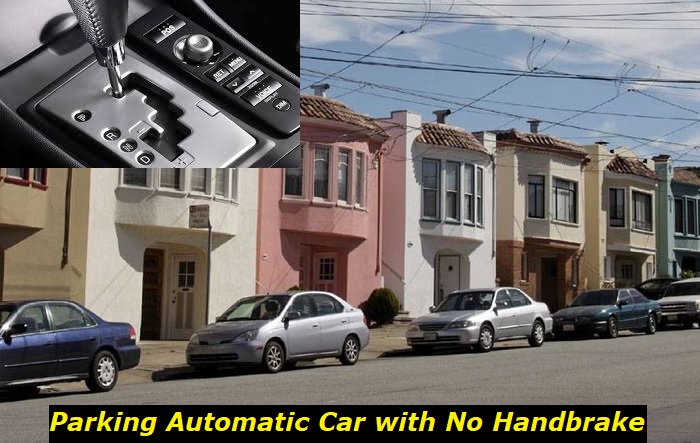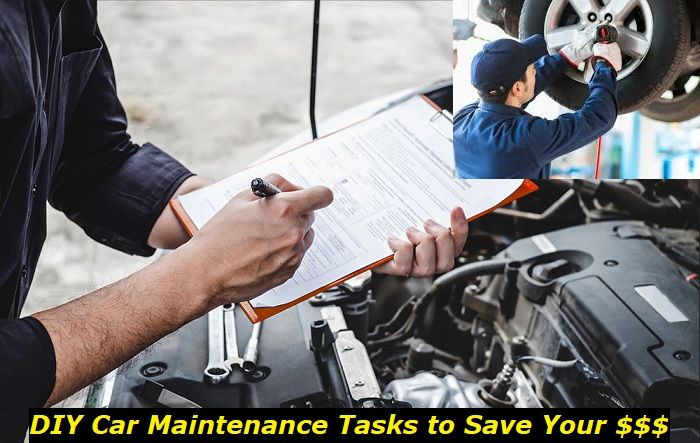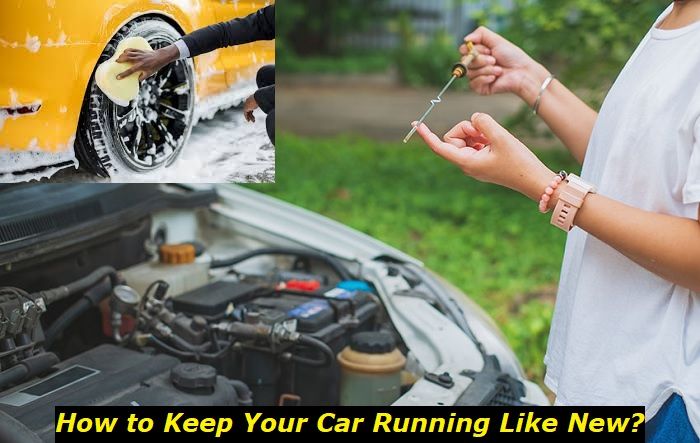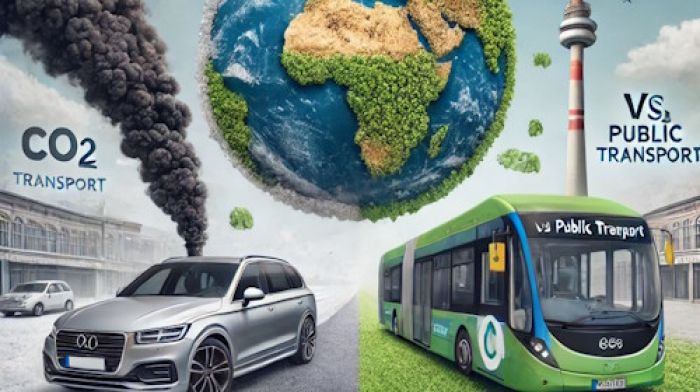You shouldn't park your car only by putting it in P without the handbrake because it can damage your transmission and eventually lead to costly repairs. It can lead to a broken parking pawl and the pieces of the pawl may then lead to other transmission damages.
Proper use of transmission highlights
- Level of importance:High
- Time interval:Always
- Needed expertise:Basic
- Needed tools:No tools
- Time taken:No time needed
- Possible issues:Transmission failing, parking pawl damage, overheating of the gearbox, issues with torque converter, problems with overloading.

Parking your automatic car with no handbrake
If you sometimes read my blog, you know that I insist that every single part and unit of your car should be working properly. Without this, you can't drive safely. So, if you are reading this and hoping that I will offer you some magical way to safely park your car when the handbrake is not working, I should frustrate you right now - go and get your handbrake working right now!
But still, just for those who can't repair their handbrakes or suddenly experience handbrake problems, I will outline several important facts about safe parking with an inoperable handbrake.
Here are some tips you should remember:
- never ever park your automatic car on a slope with any kind of incline if your handbrake is not working;
- this will lead to severe stress to your transmission and may lead to very bad consequences;
- if you have to park on a road with an incline, you need to find something that you can put under the wheel to reduce stress on the transmission;
- find level places for parking and put the transmission lever to Park before you leave the vehicle.
So, if you are parking on a level surface, you will not need to apply the handbrake. This will only add wear and tear to the handbrake itself and will make its death closer. But if you are parking on a hill, the use of a handbrake is necessary. Instead, you may use some object that you can place in front of one of the wheels to let the car rest on it without the risk of moving.
Here's how it works:
- find a brick or a stone that can easily hold your car's weight on the road;
- put it right in front of the wheel - choose any wheel and put the brick lower than the car on the incline;
- then get into your car, start it, and drive several inches from the brick;
- now, carefully let the car drive towards the brick and touch it, you may use N transmission mode for this;
- after that, release the brake pedal and see if the car is safely parked;
- then, press the brake again and put the shifter to Park again, turn off the engine;
- before you drive the car, don't forget to take the brick away.
This will work if you need to leave your vehicle on an incline but the handbrake is not working well. This will largely relieve possible stress from the transmission and will also guarantee that your car won't move on its own.
What happens with your automatic transmission when you put it in Park?
What makes an automatic transmission stand still when you put it in Park? There is a special parking pawl that locks and holds the transmission in place not letting it rotate once you put the shifter in Park. If you don't do this and put the shifter in Neutral, for example, you can find your car rolling once you release the brake pedal.
So, this is a special parking pawl that holds the car in place once you put it in Park. But it's not that hard to damage the parking pawl. Especially, if you own a big and heavy car like a full-size SUV or a truck.
Here's how it happens:
- you put your car on a hill;
- then you put the shifter in P;
- the parking pawl comes in contact with the transmission gear;
- but once you release the brake, the pawl gets under huge pressure and stress;
- this leads to issues like cracking, breaking, or deformation of the pawl;
- several times you can do this until the pawl is broken to pieces.
Here comes the worst part: your broken parking pawl can easily get into the transmission because there is nothing that prevents it from getting there. It can be OK for a day or two but then suddenly the transmission gets stuck because the parts of the parking pawl got right between the gears or something.
This may lead to fatal damage to the transmission and the need to repair or even replace the unit. It's really hard to say how long a transmission can still drive after the parking pawl is not functional.
If you notice that when you put the transmission in Park but the car acts like it's in Neutral, you should immediately call a tow truck and get your vehicle delivered to a trusted repair shop or dealership.
Emergency ways of parking on the hill with no handbrake
So, let's imagine you just need to park urgently but there is only a place in a hilly area. Your handbrake isn't functioning and is obviously asking for repairs. You read half of this article and now don't want to park the car on the hill and get potential problems with the parking pawl and all other things with your transmission.
Here are your options:
- Take your time and find a place where you can park your car on a level surface. This will obviously help you save the transmission from damage.
- Get the brick or something that can hold your car on the hill and use the trick that I've described in this article.
- Park on the hill but perpendicular to the incline. If it's possible and the road signs don't ban this, park the vehicle in such a way that it would face the incline with its side. Then you can safely apply the Park mode in the transmission.
- If you aren't going to leave the car and want to sit and wait for someone, just hold your foot on the brake pedal before you shift to Park, and don't release the brake pedal after that till you drive.
But I strongly recommend you repair the handbrake as soon as possible. Using your handbrake is always the safest way to park and it releases the stress from your parking pawl in the transmission. Also, you can make sure that the car won't go anywhere.
Imagine the situation where the parking pawl is broken in the middle of the night when you are sleeping. Nothing will hold your car and it will hit another vehicle or maybe some fence causing a lot of problems and additional expenses. So, it's always a good idea to keep the parking brake completely operational.
How to prevent problems with parking brake and automatic transmission?
You can't prevent all problems with your vehicle. Sometimes, these issues are spontaneous and they happen because you damaged something in the braking system. Suddenly you realize that there is no handbrake in your car now and you need to change your routine of parking the car.
But, very often, we create these problems on our own. Here are some of the most important things you should know about the prevention of these problems:
- maintain your handbrake and have it inspected each time your car is on regular maintenance;
- make sure you always buy high-quality parts for repairing and maintaining the braking system in your vehicle;
- don't ignore the problems - usually, you will get the first signs of these problems much earlier than the handbrake will disappear;
- make sure your car mechanic is an experienced professional with the proper tools and knowledge;
- use the handbrake wisely - don't start driving till you release the handbrake.
Using your vehicle wisely will certainly prolong the life of the handbrake and other parts and units. But if your mechanic says that the brake pads should be replaced, you better replace them right away without thinking that it can still drive a season or two.
Final thoughts
Be careful with brakes - this is one of the most important systems in your vehicle. If your handbrake is not working as it should, immediately have it inspected and repaired. If your handbrake is not operational, avoid parking your car on the hill. This may lead to parking pawl ruining and, in the end, it can kill the transmission. It's extremely important to understand that the transmission is very expensive to repair or replace.
About the authors
The CarAraC research team is composed of seasoned auto mechanics and automotive industry professionals, including individuals with advanced degrees and certifications in their field. Our team members boast prestigious credentials, reflecting their extensive knowledge and skills. These qualifications include: IMI: Institute of the Motor Industry, ASE-Certified Master Automobile Technicians; Coventry University, Graduate of MA in Automotive Journalism; Politecnico di Torino, Italy, MS Automotive Engineering; Ss. Cyril and Methodius University in Skopje, Mechanical University in Skopje; TOC Automotive College; DHA Suffa University, Department of Mechanical Engineering






Add comment